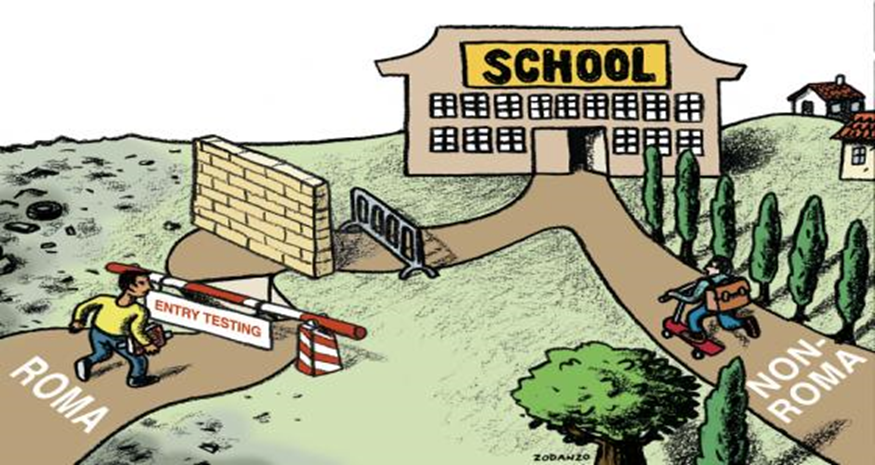ANTIGYPSYISM
Unfortunately, in many European countries there are cases where:
– the Roma genocide is denied;
– the Roma people are persecuted for their ethnicity;
– Roma people are facing the violence against their community and their property;
-Roma children are enrolled in special schools or the classes for the Roma children only are established;
– forced sterilization is carried out;
– spreading of stereotypes about Roma people, hate speech is provoking;
– And other cases.
All this is called ANTIGYPSYISM
The concept of antigypsyism (Romani – ANTI-CYGANIZMO) originated in Russia in 1920’s but the phenomenon itself has deep historical roots.
In between the years 1970-1980. the concept of antigypsyism began to be used in academic discussions and since the year 2000 the term ‘antigypsyism’ is starting to appear in the international institution’s vocabulary. The first legal document that used the term ‘antigypsyism’ was the Resolution of the European Parliament ‘On the situation of the Roma people in Europe’ of the year 2005. In the years 2005 – 2006 the use of this term has become established in various international organizations and their documents. In 2005, European Commission against Racism and Intolerance (ECRI) admitted the existence of a specific form of racism against the Roma community. In 2011, ECRI adopted a recommendation No. 13 ‘On the fight against antigypsyism and Roma discrimitation’ which uses the definition proposed in 2006 by Valeriu Nicolae, which claims that:
‘Antigypsyism is a specific form of racism, an ideology of racial superiority. a form of dehumanization and institutional racism […] arising from historical discrimination.’
On 15th of April, 2015, the European Parliament reiterated this definition of antigypsyism in a resolution on the occasion of International Roma Day.
The Alliance Against Antigypsyism (the unification of European organizations) offers the following definition:
‘Antigypsyism is a historically constructed, persistent racism against the social groups identified as ‘Gypsies’, which includes:
- unified perception and description of these groups;
- assignment of specific properties;
- discriminatory social structures and violent practices that have humiliating effects and create structural inequalities.‘
International Holocaust Remembrance Alliance (IHRA) uses the antigypsyism definition accepted on the 8th of October 2020:
‘Antigypsyism/anti-Roma discrimination is an individual act; institutional policy and practice aimed at marginalization and exclusion toward Roma people; physical violence; devaluation of Roma culture and way of life; hate speech directed towards Roma community and other similar groups who were persecuted during the period of Nazi and continued to be persecuted for being Gypsies‘.
By the concept of antigypsyism it is aimed to change the formation of public policy towards the Roma by shifting the responsibility for Roma discrimination, systematic-historical racism and exclusion to the authorities, which have the duty to effectively ensure the equality, non-discrimination and fundamental tights for the Roma community members.
Antigypsyism is a broad concept that has a collective rather than an individual character, targeting all those who are perceived as ‘Gypsies’ in society. Discrimination usually has an individual purpose and therefore cannot cover all the forms of ill-treatment against Roma people.
